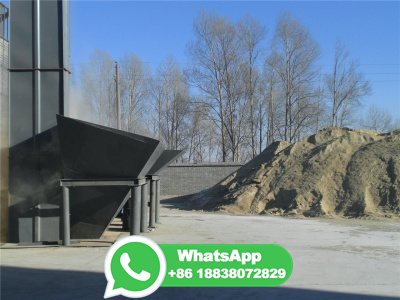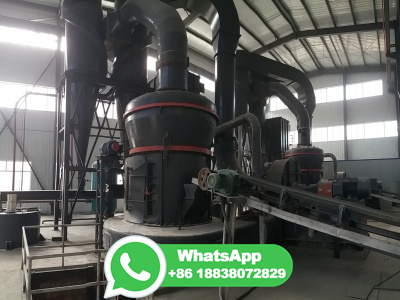
WEBThe slow process of conversion of plants into coal is calledcarbonization. (a) The slow process of conversion of dead vegetation into coal is called ___. (b) Coal and petroleum are formed from the dead remains of organisms and are known as ___. (d) During the processing of coal to get coke, coal tar and ___ are also obtained.
WhatsApp: +86 18203695377
WEBNov 21, 2017 · The pearl forms through a process that starts when an irritant gets into the mollusks at the mantle tissue. In reaction, the mollusks produce nacre, a thick organic liquid which builds on the stable irritant for a period to create the pearl. In the normal pearl formation process, one pearl is created at a time differing from the cultured pearls ...
WhatsApp: +86 18203695377
WEBJun 25, 2018 · 3. Describe how coal is formed from dead vegetation. What is this process called? 4. Fill in the blanks. 5. Tick true/False against the following statements. 6. Explain why fossil fuels are exhaustible natural resources. 7. Describe characteristics and uses of coke. 8. Explain the process of formation of petroleum. 9.
WhatsApp: +86 18203695377
WEBThe temperature also rose as they sank deeper and deeper. As this process continued, the plant matter was protected from breakdown, usually by mud or acidic water. ... shallow seas of the Carboniferous Period provided ideal conditions for coal formation, although coal was formed in most geological periods. Coal is known from Precambrian strata ...
WhatsApp: +86 18203695377
WEBApr 15, 2022 · As for the coal rank effect, a singleparticlebased study revealed that heterogeneous ignition is enhanced with increasing coal rank for both air and oxycombustion conditions [11]. Another closely related earlystage process in coal combustion is the formation, evolution, and oxidation of soot (or termed black carbon).
WhatsApp: +86 18203695377
WEBFormation of coal : ... Carbonization: The slow process of conversion of wood into coal over millions of years is called carbonization. Uses of coal : Coal is widely used as a fuel for domestic and industrial appliions. Thermal power stations burn coal to convert water into steam, which is then used to run generators that produce electricity
WhatsApp: +86 18203695377
WEBJun 5, 2024 · The formation of coal occurs over millions of years via a process known as carbonation. In this process, dead vegetation is converted into coal which is found to be carbonrich under very high temperature and pressure. Complete step by step solution: Coal is also called as black gold. Now let's discuss about how coal is formed.
WhatsApp: +86 18203695377
WEB(b) Coal and petroleum are formed from the dead remains of organisms and are known as ___. (c) The black thick liquid with ___ smell is known as coal tar (d) During the processing of coal to get coke, coal tar and ___ are also obtained. (e) The process of separating the various constituents of petroleum is known as ___.
WhatsApp: +86 18203695377
WEBJan 5, 2024 · During this process, the Ga, initially incorporated into the octahedral sheets of kaolinite structure by isomorphically replacing octahedral Al in the kaolinization process of volcanic ash, was retained by the boehmite. The formation of boehmite and its retention for Ga contributed to the genesis of high–Al–Ga coal.
WhatsApp: +86 18203695377
WEBJun 19, 2023 · The process of coal formation is known as coalifiion. The following are the steps for the process of formation of coal: (Peat rightarrow Lignite rightarrow Bituminous rightarrow Anthracite) Peat Formation: This is the first stage of coal formation. It is an organic substance formed due to the partial decomposition of dead .
WhatsApp: +86 18203695377
WEBThe uses of fractional distillation are that it enables component separation into different phases and purifiion of organic compounds. In coal and petroleum class 8 notes, the classifiion of natural resources, the formation of petroleum and coal and the refining of petroleum along with class 8 Science chapter 5 MCQs are discussed.
WhatsApp: +86 18203695377
WEBThe coalifiion process includes first a biochemical phase (that occurs in the peat swamp just after organic debris has accumulated and at very shallow depths) followed by a geochemical phase or coal second phase involves the largest and irreversible physical and chemical transformation from the lignite stage to the .
WhatsApp: +86 18203695377
WEBOct 19, 2023 · Natural gas is a fossil other fossil fuels such as coal and oil, natural gas forms from the plants, animals, and microorganisms that lived millions of years ago. There are several different theories to explain how fossil fuels are formed. The most prevalent theory is that they form underground, under intense conditions. As plants, .
WhatsApp: +86 18203695377
WEBCrude oil, coal and gas are fossil fuels close fossil fuel Natural, finite fuel formed from the remains of living organisms, eg oil, coal and natural gas.. They were formed over millions of years ...
WhatsApp: +86 18203695377
WEBAlso known as "soft coal", bituminous coal is the type found in Cape Breton and is our most abundant fuel. It is greatly used in industry as a source of heat energy. Anthracite – Stage Four Anthracite, the fourth stage in coal formation, is also known as "hard coal" because it is hard and has a high lustre.
WhatsApp: +86 18203695377
WEBOct 19, 2023 · Coal is a sedimentary rock formed over millions of years from compressed plants. Inorganic detrital rocks, on the other hand, are formed from broken up pieces of other rocks, not from living things. These rocks are often called clastic sedimentary rocks. One of the bestknown . clastic sedimentary rocks is sandstone.
WhatsApp: +86 18203695377
WEBMining. Coal is extracted by two principal methods, of which there are many variants: surface mining or subsurface mining. Surface mining uses large machines to remove the soil and layers of rock known as overburden to expose coal seams that are close to the Earth's surface (figure (PageIndex{a})).Strip mining is a type of surface mining in .
WhatsApp: +86 18203695377
WEBApr 18, 2019 · The coincidence of factors which are necessary for coal formation is so rare that it is understandable that major coal formation has taken place in ... Coalifiion is the process by which peat is transformed into coal. The process of transforming vegetable matter into coal ... Fat coal is also known as metallurgical coal, and can be used to ...
WhatsApp: +86 18203695377
WEBOct 11, 2023 · From ancient forests to energyrich deposits, the journey of coal formation is a remarkable story of nature's ability to convert life into fuel. Stage 1: Peat Formation – The Humble Beginning of Coal. The first stage in coal formation, known as peat formation, is the humble beginning of this remarkable process.
WhatsApp: +86 18203695377
WEBNov 24, 2020 · this process is called destructive distillation. • The resulting gas consisting of ammonia and. coal tar is cooled in an air condenser. • The gaseous mixture is then passed in the. scrubber ...
WhatsApp: +86 18203695377
WEB5 days ago · Formation of Coal. Coalifiion is a process in which dead matters like plants and vegetation convert into coal over a prolonged period of time. In the past geological times, the Earth was covered with dense forests, especially in the wetland areas. ... In the United Kingdom, it's known as steam coal, and it was once used to generate .
WhatsApp: +86 18203695377
WEBMar 26, 2012 · A process simulation model of coal decoupling combustion in a 30 kW circulating fluidized bed (CFB) combustor has been developed for predicting NO and N 2 O emissions based on the builtin modules/blocks provided by Aspen Plus software as well as the external subroutines from FORTRAN compiler. The gas–solid hydrodynamics in the .
WhatsApp: +86 18203695377
WEBAug 7, 2019 · Abstract The process of thermolysis of brown coal from the Shurab deposit was analyzed by comparing the reaction kinetics and the yield of cokeoven gas under changes in process conditions over a range of 300–1000°C with a temperature step of 100°C. Among the eight cokeoven gas fractions obtained, the highest yield .
WhatsApp: +86 18203695377
WEBMar 7, 2024 · Formation of Coal and its Types. Here is how coal is formed: ... This process of conversion of dead vegetation into coal, which is mainly carbon, is known as carbonisation. Now, some products are produced by processing coal such as coke, coaltar, coal gas, etc. ... Explain the process of the formation of petroleum. Soln: It was .
WhatsApp: +86 18203695377
WEBJan 23, 2024 · Cofiring ammonia (NH3) fuel in coalfired power plants is an important technical path for mitigating CO2 emissions. Combustion experiments of coal and ammonia were carried out on a McKenna flat flame system, and cumulative samplings of soot particles in the volatile flame were conducted. Detailed information on soot oxidation .
WhatsApp: +86 18203695377
WEBApr 16, 2024 · Answer. Petroleum was formed from plants and animals living in sea. When they died, their bodies settled at bottom of ocean. These get covered with sand and clay. Due to high temperature, high pressure and absence of air. in millions of years, these dead organisms get converted into petroleum. Next: NCERT Question 9 Important → Go .
WhatsApp: +86 18203695377